Saving means earning, especially, when it comes to vacationing in Sochi. In recent years, the resort city has firmly established the opinion “It’s expensive in Sochi!” The Sochi correspondent of EcoTourism EXPERT tells the readers about the most interesting free entertainment options.
It’s time to walk in the parks
Of course, Sochi is a city of gardens. It’s enough to go outside and, as famous poet Mayakovsky wrote, “You smell magnolia or look at wisteria”. But to enjoy all the diversity of the subtropic plants and trees, tourists should go to a park. Besides, they can enjoy the walk and time in the park for free.
The Riviera Park located at 1, Egorova St is the first one. The history of this park began over a hundred years ago when entrepreneur Vasily Khludov bought a very big plot of land on the Black Sea coast in the town of Sochi that had just appeared on the map of the Russian Empire. He created the Razdolnoye estate, built a dacha (summer house) and laid out a park; he purchased interesting plants from all over the world and collected unique botanical collections. Today, on an area of 14 hectares in the Riviera Park, over 10 thousand plants have been collected, including Himalayan cedars, fragrant osmanthuses, ancient sago palms, cypresses, palms, and many others. There are even ‘astronautical’ magnolias - a whole alley planted by space explorers - astronauts Yuri Gagarin, German Titov, Valentina Tereshkova, Alexey Leonov, Valery Sevastyanov, and others. One of the main highlights of the Riviera Park is its rose garden, the old historical part of which is over a hundred years old. Several years ago, the beautiful part of the park was reconstructed and became one of the largest in Russia in terms of the number of flowers in the garden with more than six thousand roses of 33 varieties. The Riviera Park is open daily from 6 a.m. to 11 p.m. Every Wednesday, free excursions are offered, people just need to sign up for an excursion in the Riviera Park’s Telegram channel. During the tour of the Riviera Park, visitors can learn interesting facts about it and discover the secrets of its botanical collection. And on one of the alleys, there is a pump room with the Plastunskaya mineral water. People can also taste it for free.
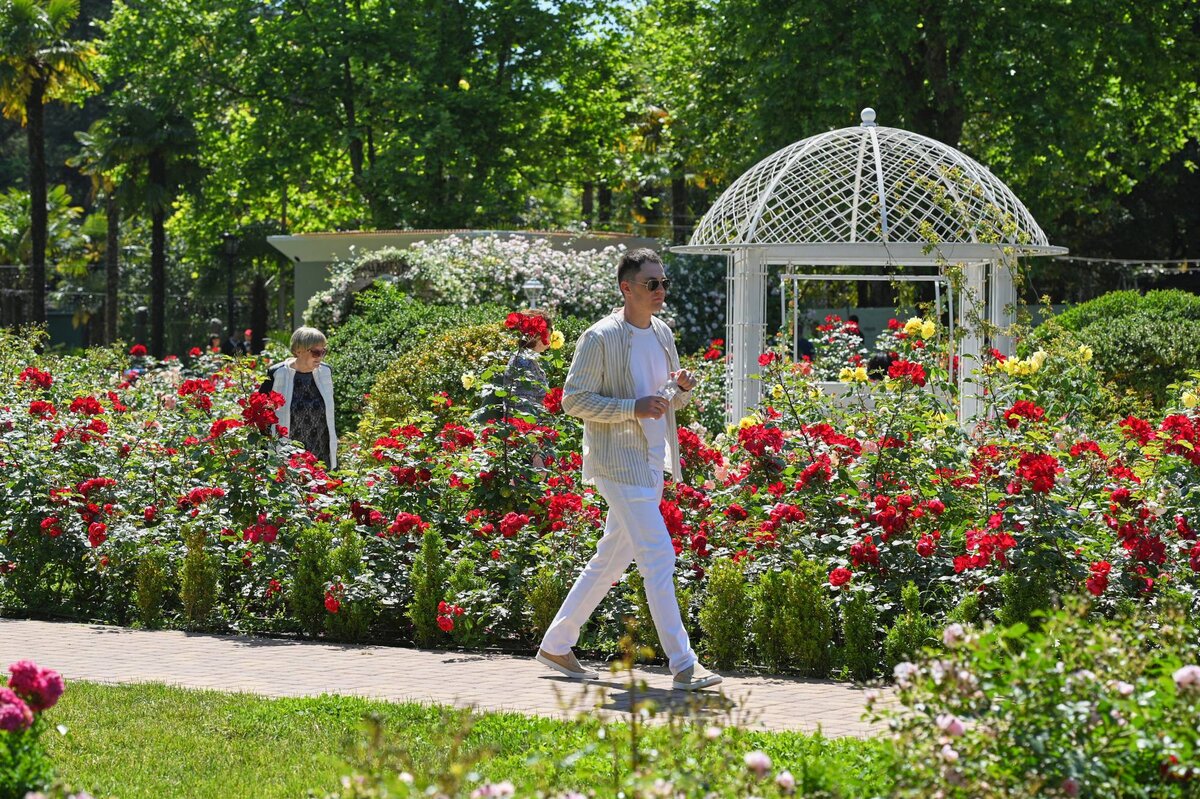
You can see all the ‘green’ treasures of Sochi in Phytophantasia collected on just a 0.3-hectare area. Many tourists cannot see this beautiful area opposite the Winter Theater (at 4a, Teatralnaya St). But if they take a step forward and go through a small door in the green wall, they find themselves on a real trip around the world. In one place, the delicate petals of Japanese sakura trees are flying around in the wind. In other places, Mexican agaves are bending, Indian bananas are filled with juice, araucaria needles are seen, as well as a tall Italian cypress tree and low-growing Canadian junipers. Every spring, a huge wisteria tree blooms giving its sweet aroma. An interesting fact: some time ago, wisteria trees were near every Sochi house, but they were cut down in the 1950s on the initiative of the Sochi police because thieves climbed up the wisteria trees that entwined the houses and got into the apartments. Perhaps, the most beautiful wisteria tree in the city has been preserved in the Phytophantasia. In total, more than 250 species of trees and shrubs and about 120 species of flowers are collected there. Such a ‘fairy tale’ garden was created over 30 years ago by a real magician Sergey Venchagov, the laureate of the RSFSR State Prize in architecture. It’s his merit that the resort city has the famous ‘Sochi style of landscaping’. The Phytophantasia is open daily from 11 a.m. to 4 p.m.
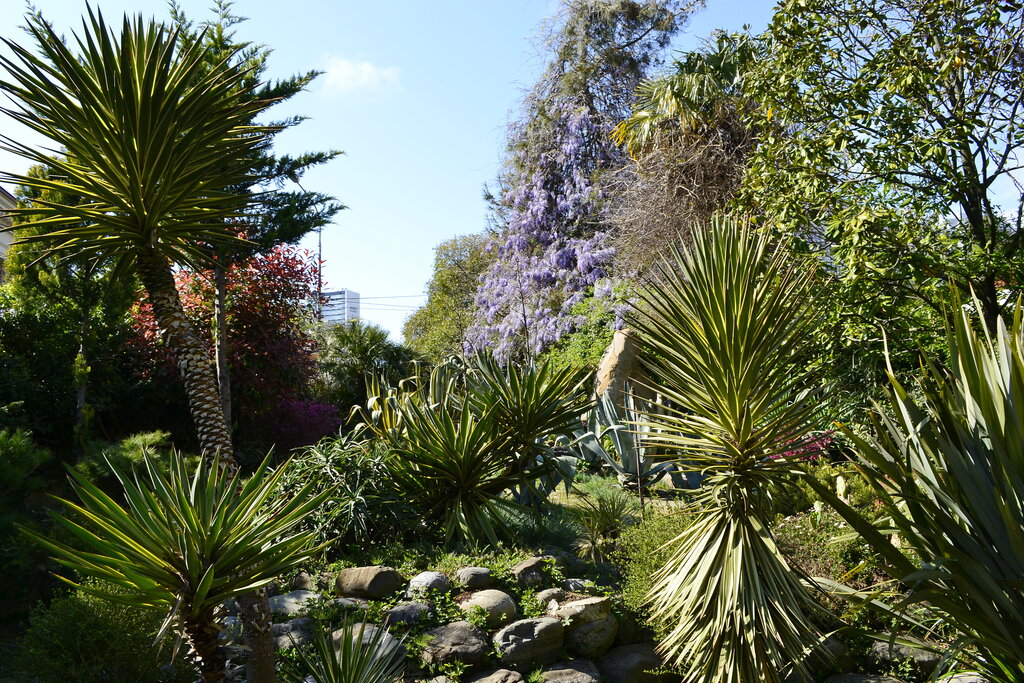
There are many museums in Sochi, and a free of charge Museum of Architecture is among them. It was opened just a year ago in the historical building of a former pumping station built in 1936 and located next to the Marine Station (at 5, Nesebrskaya St.).
Over 90 exhibits are displayed at the museum, many of them are from the State Museum of Architecture named after Alexey Shchusev. The exhibition includes the materials from architectural competitions and the historical photographs of the Sochi buildings dating back to the 1930s, some of them have already been lost. The works by famous architects Alexey Shchusev, Ivan Zholtovsky, Alexander Kuznetsov, Karo Alabyan, and Alexey Dushkin are displayed at the museum. The Museum of Architecture is open from 11 a.m. to 3 p.m. every day except Monday. There are free tours at 12.30 p.m. that last just half an hour, and an experienced guide tells the visitors about the architecture of Sochi and about the history of the resort city.
The Fort Art Gallery located near the Marine Station (at 7, Moskvina St.) can be called an open-air museum. This is the place where Sochi was founded. After the signing of the Treaty of Adrianople (also called the Treaty of Edirne) in 1829, the Black Sea coast of the Caucasus belonged to Russia. In order to protect the coast against the attacks by Turkish troops and the mountain tribes, the decision was taken to build a fortified coastline. 3,000 to 3,500 Russian people arrived by sea at the mouth of the Sochi River early in April, 1838. A few days later, the construction works began at the Fort Alexandria (later called the Navaginsky Fort) on April 21, 1838. There is a fragment of the fortress wall in its place that serves as the basement of the Fort Art Gallery, and there are also ancient cannons with cannonballs. The gallery’s courtyard is decorated with memorial inscriptions about historical events associated with this place, and there are information boards telling about the household items and weapons found during archaeological excavations on the area of the Fort Alexandria. The Fort is open daily from 11 a.m. to 8 p.m. The visitors of the Fort Art Gallery can also get some idea about the history of Sochi and get acquainted with the contemporary art of the resort city, as the Fort Art Gallery exhibits the art-works by Sochi painters.
The Olympic Park in the Imereti Lowland is open to the public for free. In 2014, the Winter Olympic Games were held in this park. Ice arenas - Ice Palaces - were built for competitions between the world’s best athletes. The Bolshoi (Big) Sports Palace designed in the shape of a huge drop hosted hockey competitions, the training of the hockey players was held on the round Shayba (Hockey Puck) Ice Arena, the Adler Arena was used by speed skaters, the Iceberg Ice Arena shimmering in all shades of blue was for training and competitions of figure skaters and short track speed skaters, and the Ice Cube Arena was for curlers. And in the Fishte Stadium, looking like mountains topped with snow, the main opening and closing ceremonies of the world sports festival were held. Tourists can still see all these sports arenas. The heart of the Olympic Park was the ‘medal’ square with a snow-white torch. The Olympic fire ‘flew up’ above it like a huge firebird. When the Olympic Games were over, it was converted into a musical fountain. Today, every evening there is an amazing musical water-and-light show, free of charge, of course. Visitors can watch completely different compositions, including well-known and favorite melodies like Swan Lake by Pyotr Tchaikovsky, the soundtrack from the Schindler’s List film, the music by Queen, the songs by famous singer Frank Sinatra, as well as the Sabre Dance by Aram Khachaturian and Libertango by Astor Piazzola. In total, the fountain ‘plays’ more than 70 melodies, and every moment, 10 tons of water are ‘ejected’. Depending on the melody, 12 water robots move along three axes and create fanwise water jets, 246 water cannons ‘shoot’, and stroboscopes or fog create the shimmer of light. Also, six water hyper-cannons are used, their waters jets are up to 80 meters high. In general, the musical water show is as amazing as in Dubai.
The Ornithological Park is next to the Olympic Park in the Imereti Lowland. Over 200 species of birds fly to the park for the winter season. The park’s area is almost 300 hectares, part of which is closed to the public as it is a preservation area where scientific work on the preservation of birds is carried out. And the part of the Ornithological Park open to public has long been one of the favorite places popular with the city visitors and Sochi residents. Just imagine - the calm water surface of the lake, lush pampas and the hubbub of birds among residential areas and hotels. It’s a haven from the noise and bustle of the city where people can enjoy being alone with nature. There are several aviaries with birds in the Ornithological Park and people can go birdwatching in any weather, there are information stands telling the visitors about the local flora and fauna and signs.
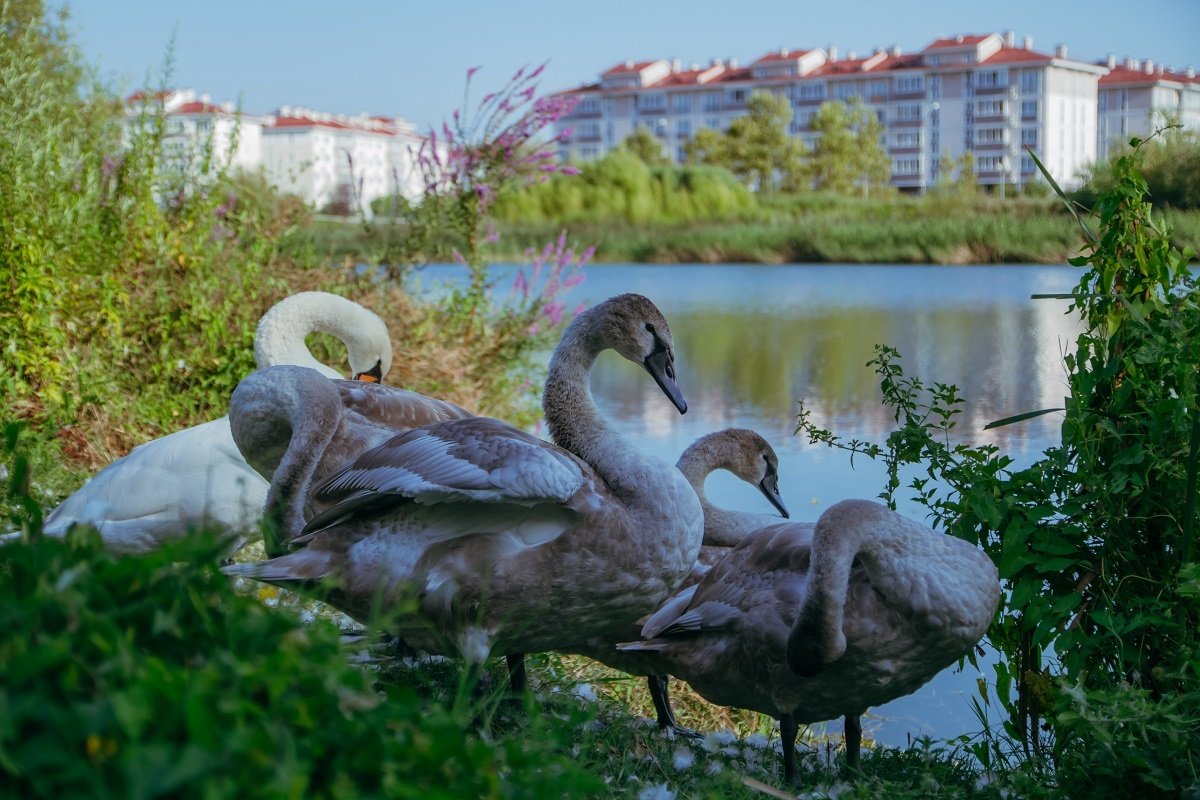
The path that helps in improving health
Scientific researches proved that walking over rough terrain is more effective than pharmacology and psychotherapy in correcting the anxiety, depression, and insomnia. The word ‘terrainkur’ (terrain cure), a hybrid of a French word (terrain) and a German one (kur), was coined by a German doctor in the 19th century and it means ‘healing by rough terrain’. There are two free terrain cure trails in Sochi. One is along the sea coast and another one is in the mountains.
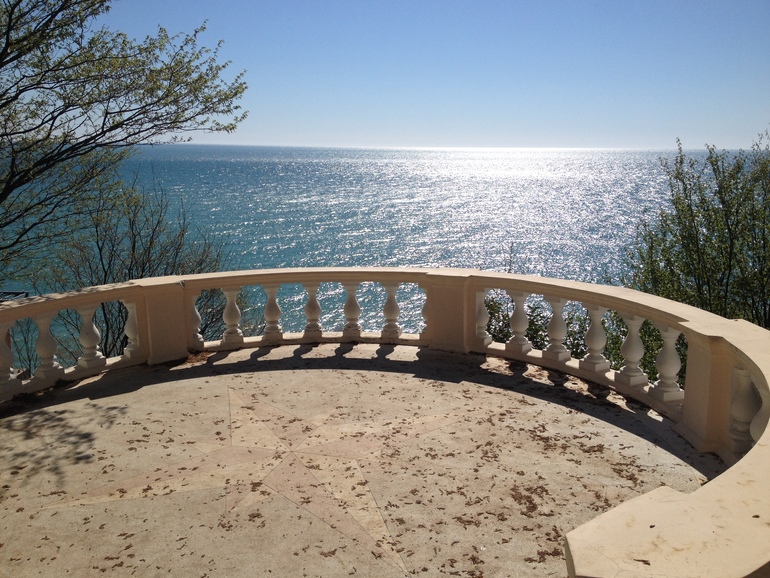
The Seafront Terrain Cure Trail was built back in the 1930s. In the Soviet times, this path was popular: there were resorts and health centers along it, and their visitors first used this terrain cure trail for dosed and controlled walking aimed at improving their health. However, in the 1990s, the terrain cure trail fell into disrepair as it was abandoned. It was restored in 2009. Now, almost five kilometers of the terrain cure trail are available, going from the Slava Metreveli Central Stadium to Matsesta with nice concrete paths, benches, gazebos, and picnic areas. But the most important thing is the surrounding green trees and bushes, including beech trees, cherry laurel trees, magnolias, chestnuts, palm trees, as well as a stunning sea view. The youngest enthusiasts of walking, of course, are interested in the high-speed trains passing by from time to time.
The terrain cure trail in the mountains is located at Rosa Khutor. It starts from the lake at the lower elevation of the resort - 560 meters above sea level. This walk is suitable both for those who decided to walk through the forest for the first time, and for experienced walkers in the mountains. The terrain cure trail is divided into three ‘rings’ - the easiest Small Ring, the most difficult Medium Ring, and the Large Ring of medium difficulty. The length of the Small Ring is 390 meters, a walk along this terrain cure trail takes 15 minutes. But even in this short time, people can get into a real Colchis forest and see centuries-old oaks, maples, ash trees, chestnuts and poplars, evergreen shrubs, and ferns overrun with lianas. A walk along the Medium Ring of the terrain cure trail normally takes one and a half hours. Mountain streams, picturesque cliffs and ancient rock falls are hidden among the mighty trees, the mosses and lianas along the 1.7-km route. It takes two hours to walk along the 1.9-km-long Large Ring. It has 919 steps, crosses 13 mountain streams and two waterfalls. Walking along this trail, people can see all the wonders of the low-mountain landscape with wooded slopes of varying steepness, boulder roadblocks, rocky depressions and streams thundering in them, and they can also see traces of wild animals and enjoy birdwatching. The terrain cure trail at Rosa Khutor opens depending on weather conditions.
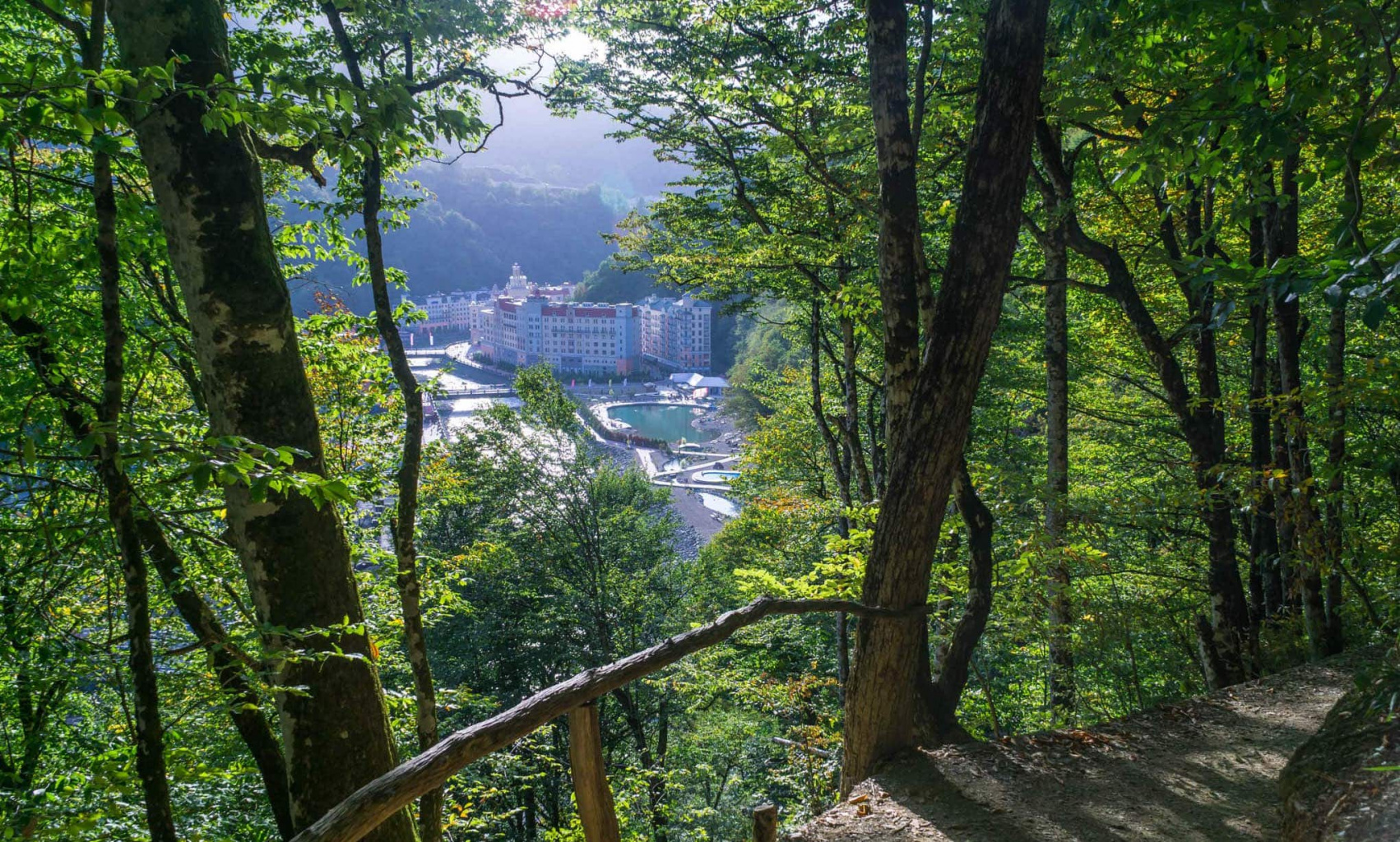
Oh, sports!
Sochi is a city of sports. In almost every district, or even in every yard, there are free of charge sports grounds open to everyone. A big sports park is located on the Sirius federal territory located on the seacoast. On an area of 4.5 hectares, there are seven sites for team sports, including volleyball and basketball, five sites fitted with outdoor exercise equipment, four grounds for yoga exercises, dancing, work, and creative activity. The over 300 active adults can do sports in the Park per hour. Over two years, more than 28 thousand free sporting activities were held in the Park attended by almost 240 thousand people. Today, 12 sports instructors work in the Park training people in 11 types of sports. People can attend - free of charge - functional training, various types of yoga exercises, including power yoga, stretching, do roller sports, play volleyball, football or train all their muscles and get training in Nordic walking. Open training is almost all day long, from 8 a.m. to 8 p.m., the schedule can be found in the Telegram channel of the Sirius’ sports park https://t.me/sport_sirius.
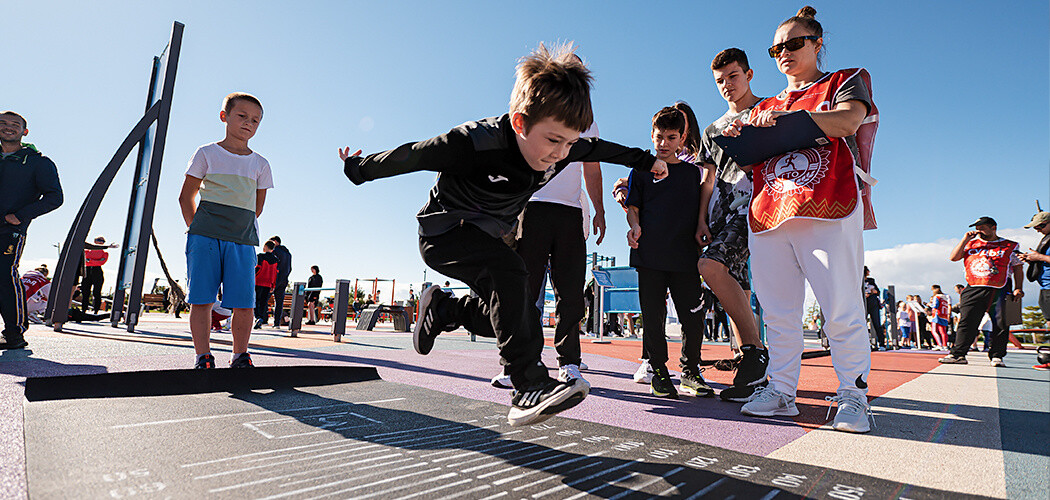
If people come to Sochi with a child who cannot swim, he can take training classes in swimming, and they are also free of charge. To do this, it’s necessary to sign up for classes in the city’s Swimming Training Program. Open water swimming lessons are conducted by professional instructors on the Ogonyok-1 beach in the Adler District, on the Crystal beach in the Khosta, the Dagomys beach in the Lazarevsky District and the Primorsky and Mayak beaches in the Central District, every day from 8 a.m. to 10 a.m. To register, it’s necessary to contact the Sochi Center for Sports and Fitness by 8 862 262 26 90 (landline 262 26 90), write an application, produce a copy of a child’s birth certificate and a medical certificate about the absence of contraindications to do sports.


